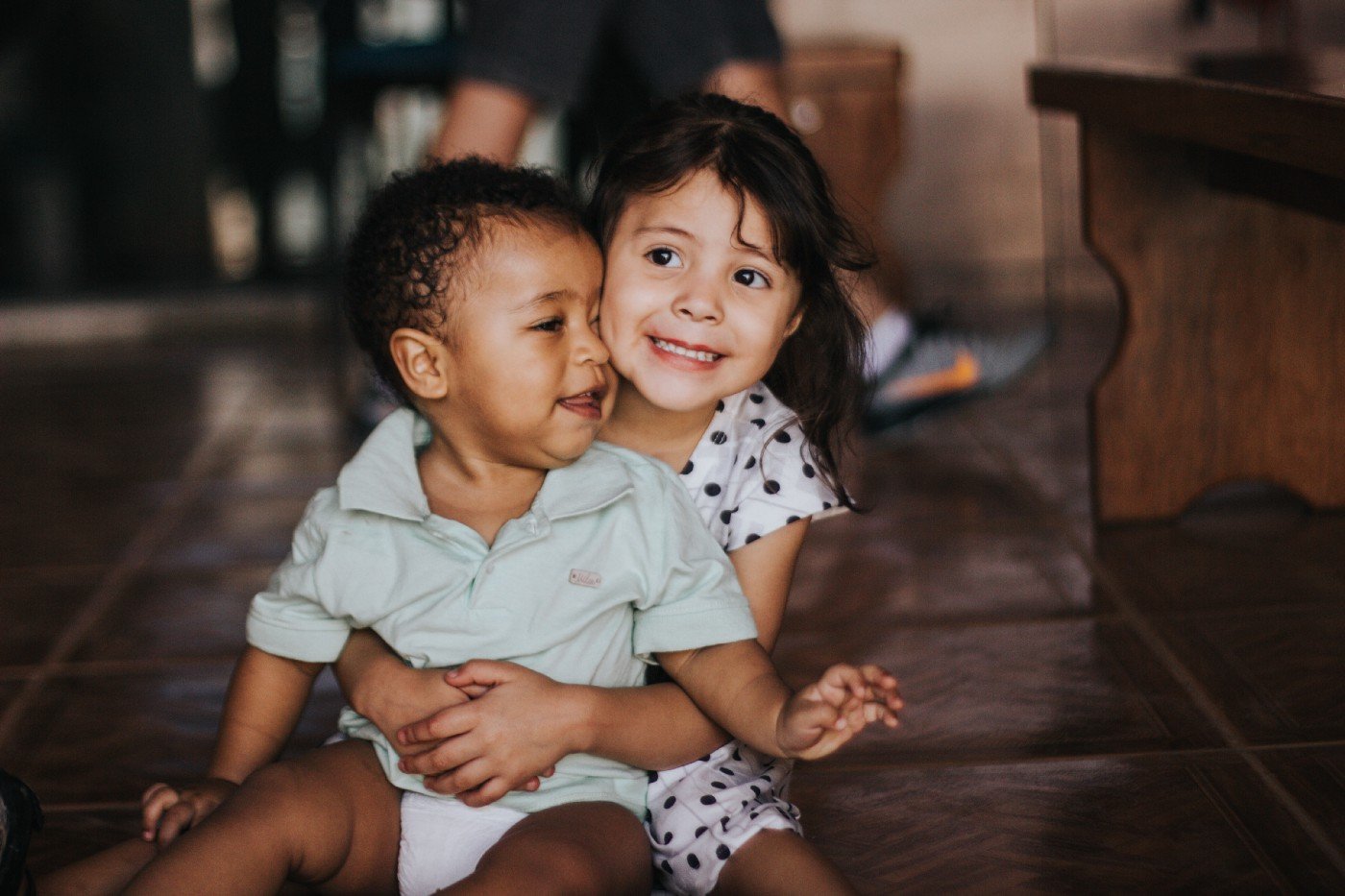How to Talk to Kids About Race & Ethnicity

Kids start to notice race as early as 3 months old, but according to Sesame Workshop (the experts behind Sesame Street) a majority of parents aren’t talking to them about it. There are a few possible explanations for this: many parents underestimate how early their kids are able to perceive racial differences, while others believe that the topic is just taboo for family discussions. Whatever the reason behind avoiding these talks may be, the truth is that candid conversations with our families about race & ethnicity are key to raising kind, respectful kids.
When we skip out on these talks, we’re not teaching our kids to stop paying attention to race, or to automatically see everyone as “the same.” Kids are hard-wired to notice physical differences like skin color in people, and our job as parents isn’t to stop this from happening — it’s to help guide their observations.
In order to raise the next generation of kids to actually treat people with equality and equity in mind, it’s important to be open about race and ethnicity. There’s nothing wrong with noticing that someone has a beard or is taller than we are, and there’s nothing wrong with noticing that people have different skin colors, either.
Claiming that we “don’t see” race doesn’t take it away. It actually just makes it harder for us — and our kids — to empathize with people who do have a different skin color and lived experience than we do. As much as we might wish it weren’t the case, things like racism and prejudice do exist in the world around us and they impact our experiences. In order to stand up against these forces, we have to acknowledge them first. And in order to do that, we have to start talking to our kids about race.
So, here are 6 tips on getting those conversations started!
1. Don’t shut down their questions.
Even if you feel uncomfortable at first! It’d be tough not to feel caught off guard by your child asking why some people have different skin colors in the middle of the grocery store, so if the timing of your kiddo’s question is really inappropriate, promise to follow-up later (and stick to that promise!).
But, try to stifle any knee-jerk reactions to hush them or imply that being curious and asking questions like this is wrong. This can unintentionally send the message that there’s something wrong with noticing race, and that being a different race than that of your child or your family is somehow bad. We should be teaching our kids to embrace our differences, not fear them!
2. Focus on the facts.
The scientific ones. For example, if your child asks you why some people have darker or lighter skin than they do, you might say:
“Your skin has something called melanin. If your skin has more melanin, then your skin will be darker. If your skin has less melanin, then it will be lighter. Usually, the amount of melanin that’s in your skin depends on how much melanin is in your parents’ skin. It’s something that gets passed down from parents to kids — just like the color of your eyes or your hair!”
3. Get plenty of diverse representations in their line of sight.
Take a look at the books, TV shows, movies, and even toys that your child is surrounded by within your own home. How many different kinds of people do you see represented?
It’s important both to make sure your child is seeing both positive representations of people who look like them, and that they’re seeing a wide range of diversity. This will instill a positive sense of identity of their own, and teach them to appreciate all different kinds of people and perspectives.
P.S. Reading is a great tool to help kids develop empathy! And that’s backed by research. Encouraging your kids to read books that tell stories about people of different races and cultures is a great way to help your kids become more understanding of people’s experiences across the globe and appreciate diversity.
4. Teach about our similarities and our differences.
Certain parts of our world, like art, music, literature, culinary traditions, and more, are thought of as “cultural universals,” meaning that pretty much every culture has their own form of these elements.
Everyone grew up around their own unique combination of these aspects — in that way, we’re all similar no matter where we’re from. But, these building blocks of our culture will be different for everyone depending on where we’re from — in that way we’re unique!
Exploring different cultures is a way to help kids understand our similarities and differences at the same time. You can do this by reading books together, visiting museums, or attending different festivals in your town. Highlight the shared aspect of these cultural universals, and encourage them to learn about and appreciate different cultures and perspectives.
“What do you think of these mooncakes? Aren’t they delicious? What kind of food does our family usually eat on the holidays we celebrate?”
5. Don't pass over the tougher topics.
Unfortunately, conversations about race and ethnicity are incomplete without talking about racism and historical racial violence. Why? Because without these conversations, we’re giving kids an incomplete picture of the world around them, and they won’t be empowered to work towards a more just version of that world if they don’t understand its history.
And you don’t have to wait until your kids are all grown up to start talking about these issues. For example, Learning for Justice recommends that kids start learning about slavery as early as elementary school.
When it comes to these topics, don’t sugar coat the truth, but don’t overload your child with information that they may not be able to understand. For example, what you don’t want to do is teach kids that slavery wasn’t that bad to protect them from knowing just how brutal the reality was, but you might not want to overwhelm them, either. You don’t have to provide all the details, but don’t tell any fibs. Keep what you reveal age-appropriate without stretching the truth.
You might try explaining:
“A long time ago, after the Europeans came to America, they kidnapped people from Africa and forced them to work without paying them. That’s called slavery. That was very unfair to them, and they were treated very badly.”
Note: it’s true that in the grand scheme of things, slavery in the U.S. happened not that long ago. To a young child, however, that scope is hard to grasp, and it’s important to emphasize the distance between the past and present moment to reassure them of their own safety.
6. Remember that you don’t have to have all of the answers.
It’s okay to respond to a question with “I don’t know.” It’s even better to follow up with “Let’s find out together!”.
If your kids ask you something that you can’t quite find a response for, admitting that you’re unsure about the answer will model for them that it’s okay to be uncertain about things from time to time, and it’s better to admit when we don’t know something than it is to try and pretend. Plus, these moments give us the opportunity to explore new topics and ideas with our kids, so that we can learn alongside them and show them how to take in new information and expand our worldview!
Want more tips on how to talk to kids about race, ethnicity, and culture? We have a whole module on the topic in the maro parents app!
Photo by Jonas Kakaroto on Unsplash.
P.S. Do you want to access maro plus for free through your employer? How about earning a $100 gift card along the way? Follow the link here to refer us to your workplace, or shoot us an email at hello@meetmaro.com and we’ll get you some more information!

